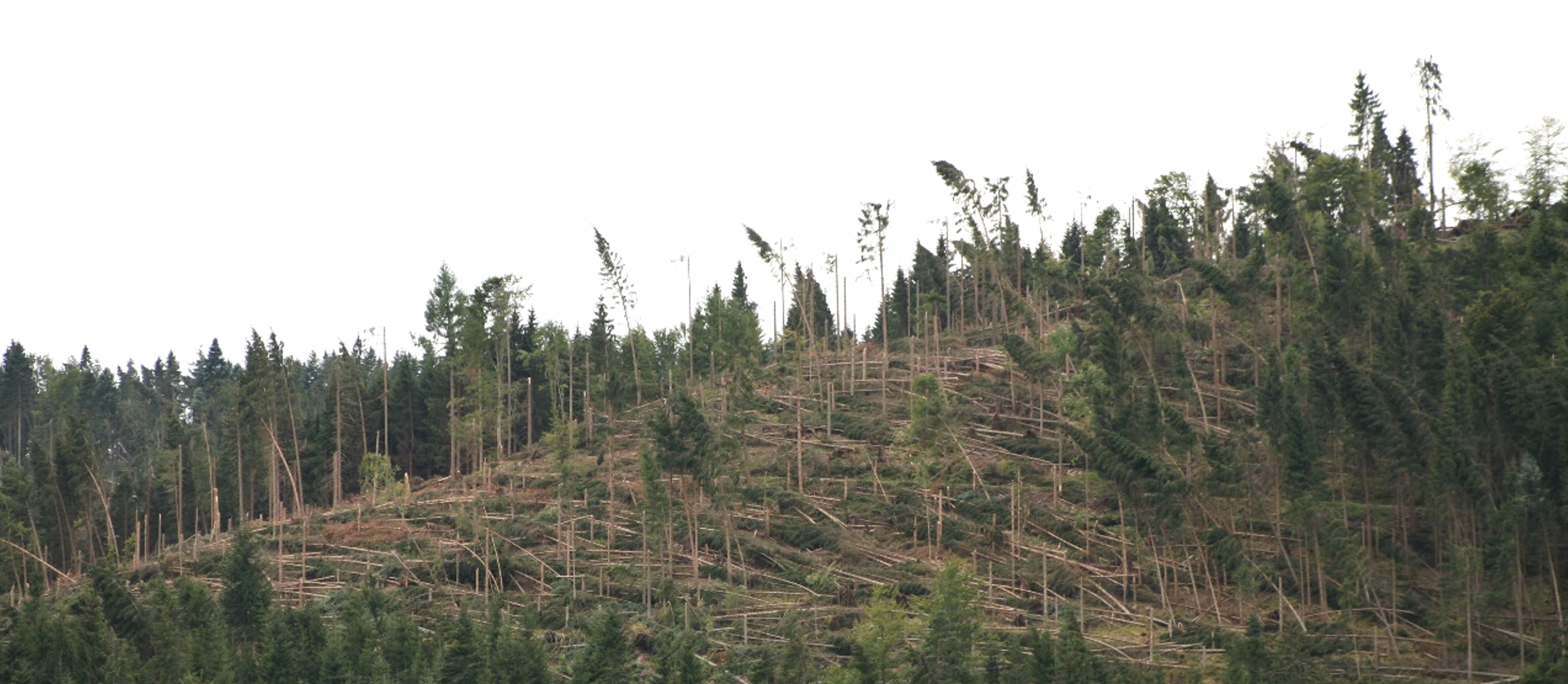Full scale testing of tree streamlining in wind (STREEM)
In the project STREEM, funded by the German Research Foundation, the Chair of Environmental Meteorology investigates reactions of trees to wind loads. The focus is on quantifying the contribution of wind-induced crown streamlining to minimising wind load transfer. The research contributes to the understanding of how storm damage occurs to trees and forests.

As part of the natural disturbance dynamics, storms cause recurrent major damage to trees. In the past decades, storms have produced more than 50% of the total amount of damaged wood accumulated in European forests. Due to their considerable, multi-layered damage effects, there is a great interest in the development of strategies to minimize the damage caused by them.
The current and future storm hazard situation raises the question of whether and, if so, how to react proactively to the storm hazard to minimize the risk of storm damage to trees and forests. An essential prerequisite for the process-based analysis of storm damage development is a comprehensive understanding of wind-tree interactions. Wind-tree interactions determine the dynamics of the transfer of kinetic energy of the airflow near the ground to trees. A key element in the transfer of kinetic energy is the streamlining of tree crowns in wind. When tree crowns are exposed to wind loads, they change their shape and aerodynamic properties to reduce the resistance to the air flowing around them. The streamlined shape reduces the wind loads acting on trees and thus the probability of damage.
However, little knowledge and quantitative information are available to date on the dynamics of the wind-induced streamline shape of crowns of real trees in the field. Previous findings have mainly been obtained from wind tunnel investigations on miniature trees or on individual tree parts, which can only be transferred to real trees to a limited extent. STREEM aims to investigate how the wind-induced streamline shape of crowns of real trees under natural flow dynamics affects the forces occurring in trees. Based on three hypotheses, we want to test
- what influence the wind-induced change of the crown projection area, drag coefficient, and porosity of tree crowns has on the wind load dynamics,
- how wind loads acting on trees depend on the wind speed near the ground,
- whether tree pulling tests used to determine the stability of trees against wind loads are suitable to approximate real wind loads. The hypotheses will be tested on different deciduous and coniferous trees species exposed to different wind climates at three locations.
An improved understanding of the wind-induced streamlining dynamics of tree crowns leads to a better understanding of the development of storm damage to trees and provide important basic information for further storm damage research.

